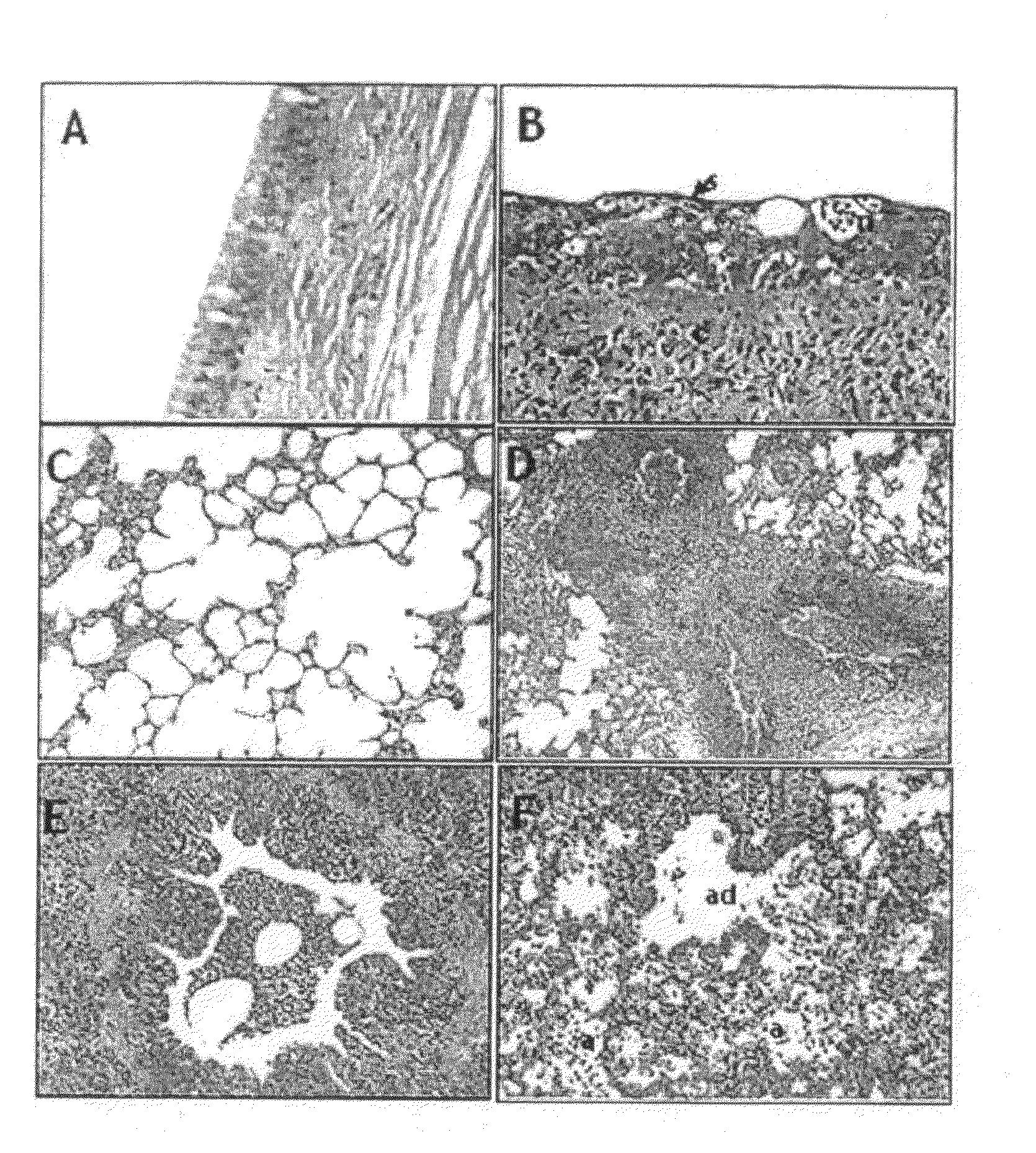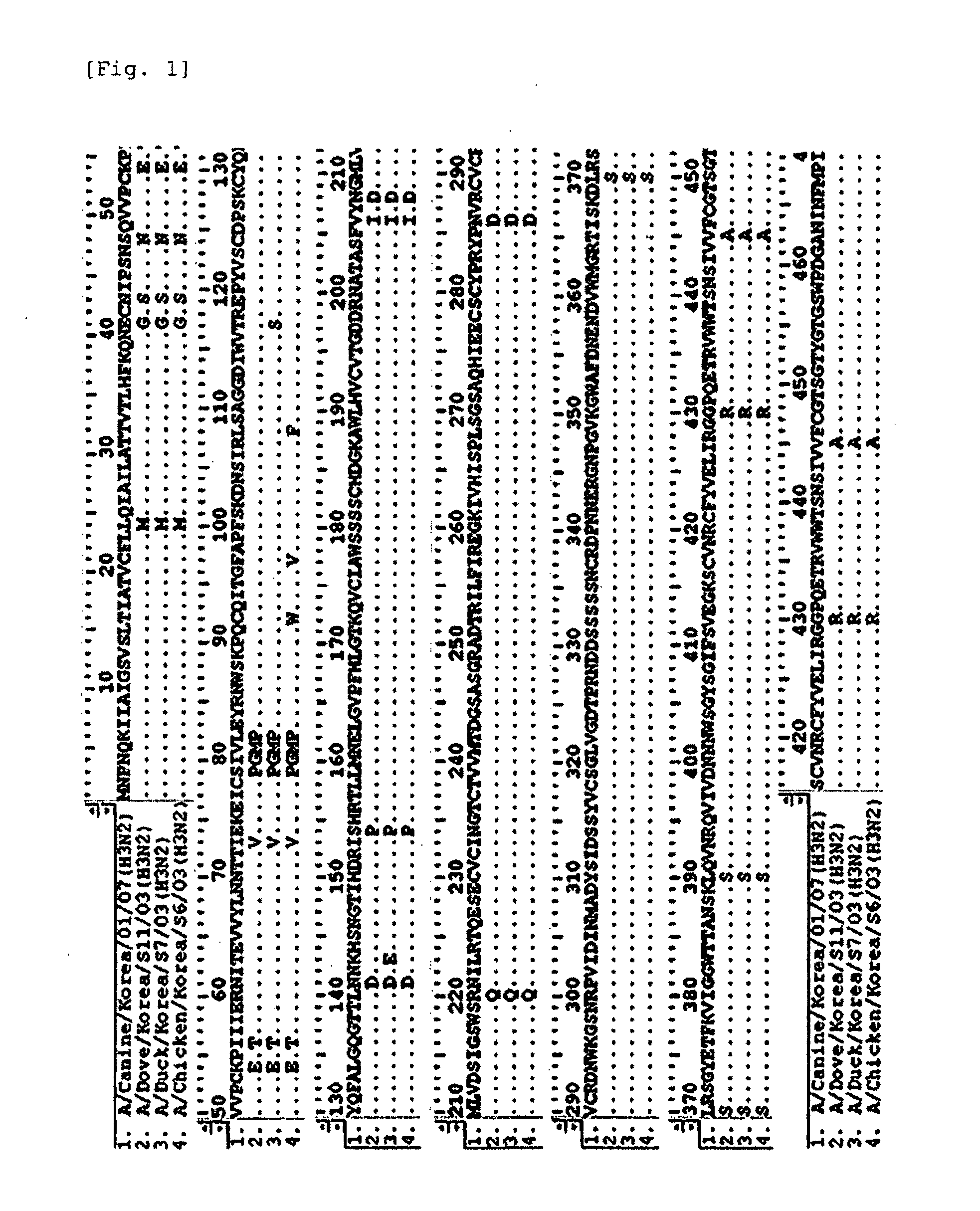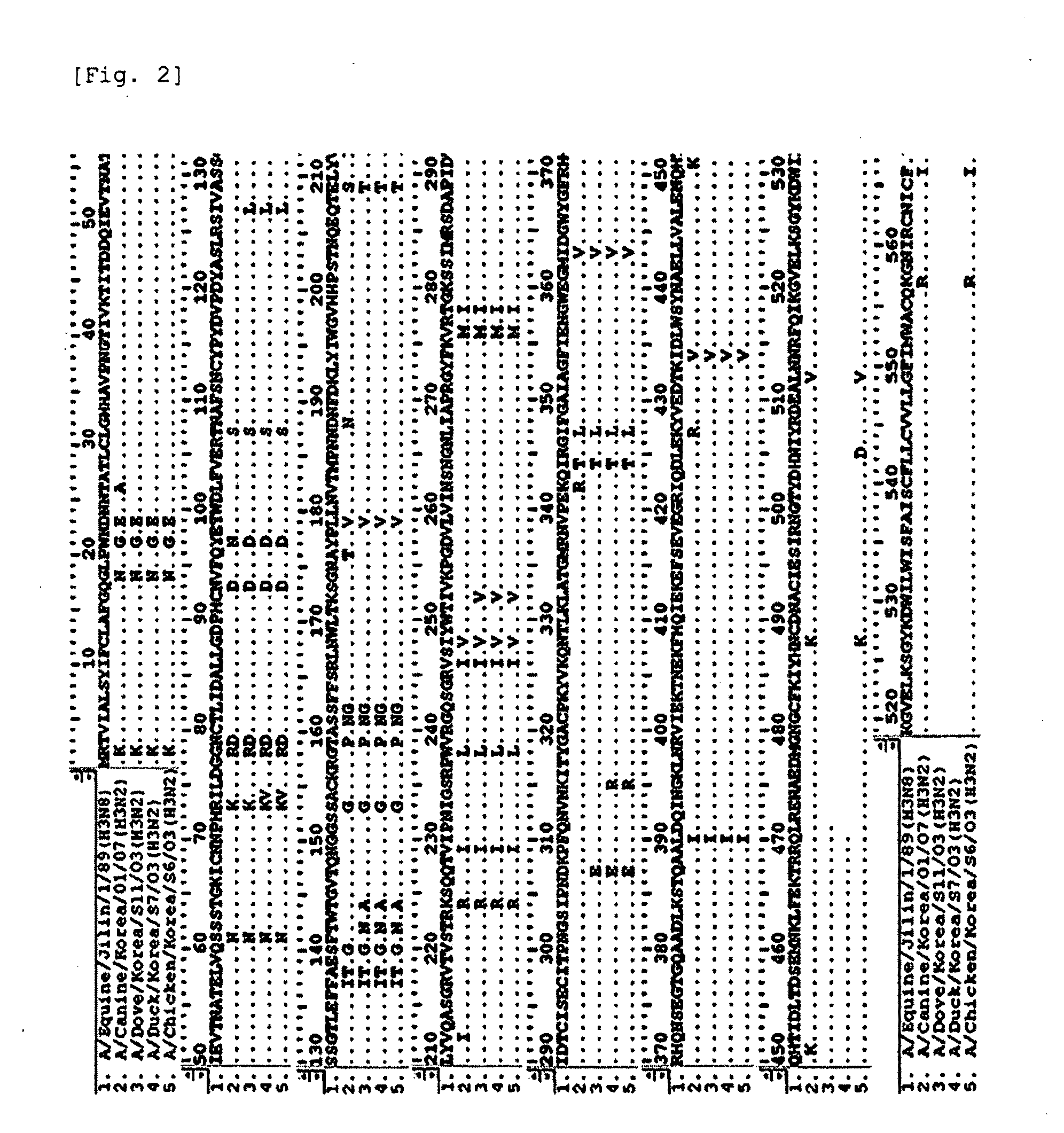Novel canine influenza virus and vaccine therefore
a technology of canine influenza and vaccine, applied in the field of new canine influenza viruses, can solve the problems of no vaccine available for dogs, no natural immunity of dogs to this virus,
- Summary
- Abstract
- Description
- Claims
- Application Information
AI Technical Summary
Benefits of technology
Problems solved by technology
Method used
Image
Examples
example 1
Specimen Sampling and Virus Isolation
[0066]Specimens were sampled from dogs which were treated in veterinary hospitals located in Kyeonggi-Do, Korea: One Miniature Schnauzer dog five years old suffered from rhinorrhea for three days and sneezing for two days and then recovered from the flu; One Cocker Spaniel dog three years old suffered from fever, cough, rhinorrhea and inappetence and finally died: One Yorkshire terrier dog and two Jindo dogs suffered from severe cough, fever and rhinorrhea and died 2 days after hospitalization.
[0067]All of these animals were identified to be infected with influenza virus type A as analyzed by a Rapid Kit, purchased from Anigen, and RT-PCR. Other pathogens were not detected from the dogs.
[0068]The specimens (nasal secretions) from the animals were inoculated into 11 day old eggs, after which chorioallantoic fluid was sampled therefrom. The fluid was found to aggregate chicken erythrocytes. The viruses isolated from the animals were serologically i...
example 2
Genetic Characteristics of Isolated Viruses
[0069]Genetic characteristics of the viruses isolated in Example 1 were determined through gene analysis. Total influenza virus RNA isolated from the chorioallantoic fluid using Trizol LS was used as a template for RT-PCR using random hexamer primers, followed by PCR using primers shown in Table 1. Primer sequences for amplifying H3, N2, PB1, PB2, PA, NP, M and NS genes were designed using a modified Primer 3 program (Whitehead Institute / MT Center for Genome Research).
[0070]cDNA (2 μl) was mixed with a reagent mix {2.5 μl, 10×Taq DNA polymerase buffer, MgCl2 1.5 mM, dNTPs (2.5 mM / μl) 2.0 μl, each primer (10 pmol) 1 μl, Taq DNA polymerase (Promega, USA) 1 μl)} and the final volume was adjusted to 25 μl with distilled water to prepare a PCR mixture. PCR started by denaturation at 94° C. for 10 min, and was performed with 32 cycles of denaturing at 96° C. for 30 sec, annealing at 53° C. for 30 sec, and extending at 72° C. for 2 min, followed b...
example 3
Phylogeny of Isolated Viruses
[0072]The position of A / Canine / Korea / 01 / 07 in a phylogenetic tree was determined using a clustal alignment algorithm and MEGALIGN software (DNASTAR, Madison, Wis.). In a point of view of HA and NA genes, the virus of the present invention was identified as belonging to a cluster different from the cluster of previously isolated H3N8 viruses from horses and dogs, and showed a very close genetic relationship with H3N2 viruses isolated in Korea (FIGS. 4 and 5).
PUM
| Property | Measurement | Unit |
|---|---|---|
| volume | aaaaa | aaaaa |
| volume | aaaaa | aaaaa |
| volume | aaaaa | aaaaa |
Abstract
Description
Claims
Application Information
 Login to View More
Login to View More - R&D
- Intellectual Property
- Life Sciences
- Materials
- Tech Scout
- Unparalleled Data Quality
- Higher Quality Content
- 60% Fewer Hallucinations
Browse by: Latest US Patents, China's latest patents, Technical Efficacy Thesaurus, Application Domain, Technology Topic, Popular Technical Reports.
© 2025 PatSnap. All rights reserved.Legal|Privacy policy|Modern Slavery Act Transparency Statement|Sitemap|About US| Contact US: help@patsnap.com



